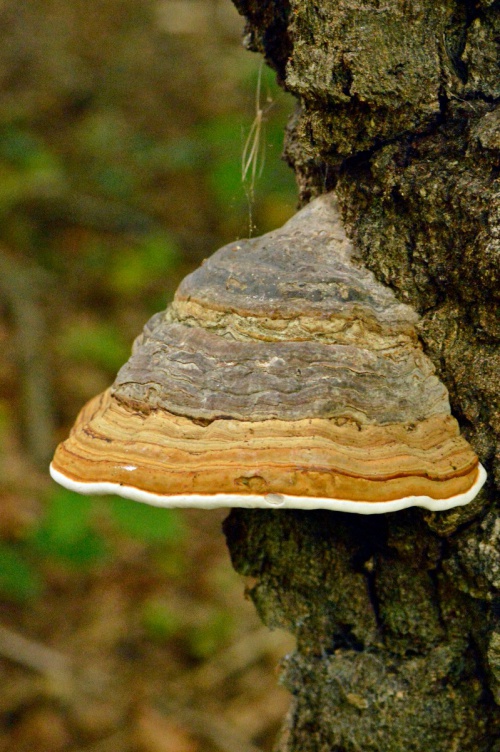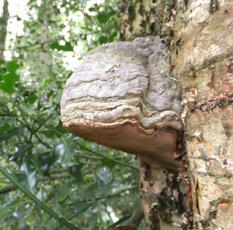Hoof Fungus - Fomes fomentarius
The very large (5 to 45 cm) fruit bodies are shaped like a horse's hoof and vary in colour from a silvery grey to almost black, though are normally brown. The species typically has broad, concentric ridges, with a blunt and rounded margin.
Mainly on Birch but occasionally recorded on other deciduous trees.
Visible all year round.
The species grows on the side of various species of tree, particularly favouring Birch, which it infects through broken bark, causing rot. The species typically continues to live on trees long after they have died, changing from a parasite to a detrivore. Unusually for a bracket fungus the spores are white and are discharged in spring.
Has a northern distribution where it displaces the Birch Polypore in Birch woodlands, particularly in Scotland. Has been increasing in southern counties, where it was formerly very rare.
Formerly rare in Leicestershire and Rutland but increasing rapidly in the woodlands of Charnwood.
Leicestershire & Rutland Map
Enter a town or village to see local records
MAP KEY:
Yellow squares = NBN records (all known data)
Coloured circles = NatureSpot records: 2020+ | 2015-2019 | pre-2015
UK Map
Species profile
- Common names
- Hoof Fungus, Tinder Bracket
- Species group:
- Fungi
- Kingdom:
- Fungi
- Order:
- Polyporales
- Family:
- Polyporaceae
- Records on NatureSpot:
- 163
- First record:
- 05/11/2004 (Nicholls, David)
- Last record:
- 03/02/2024 (Joanne Jennings)
Total records by month
% of records within its species group
10km squares with records
The latest images and records displayed below include those awaiting verification checks so we cannot guarantee that every identification is correct. Once accepted, the record displays a green tick.
In the Latest Records section, click on the header to sort A-Z, and again to sort Z-A. Use the header boxes to filter the list.



















